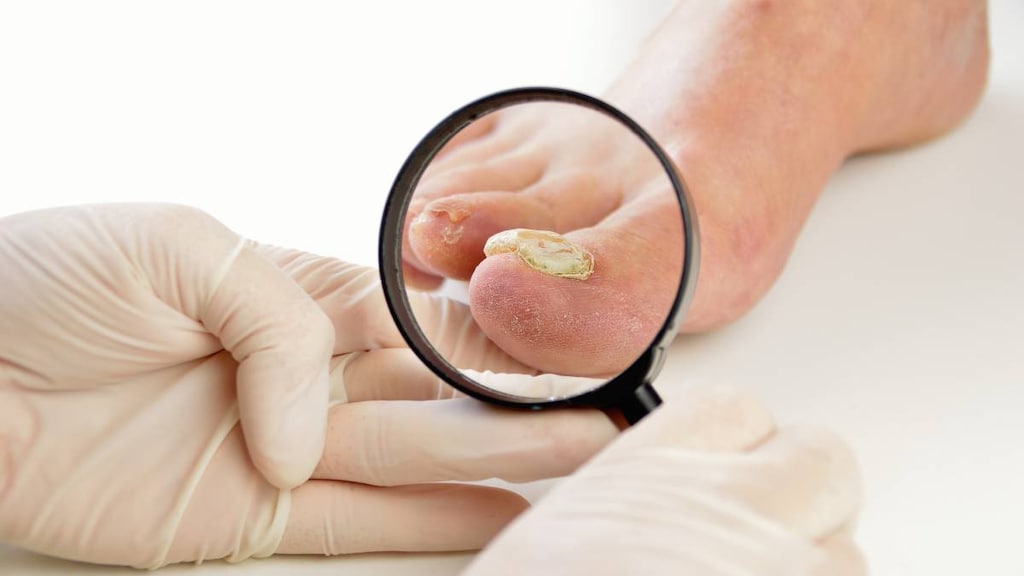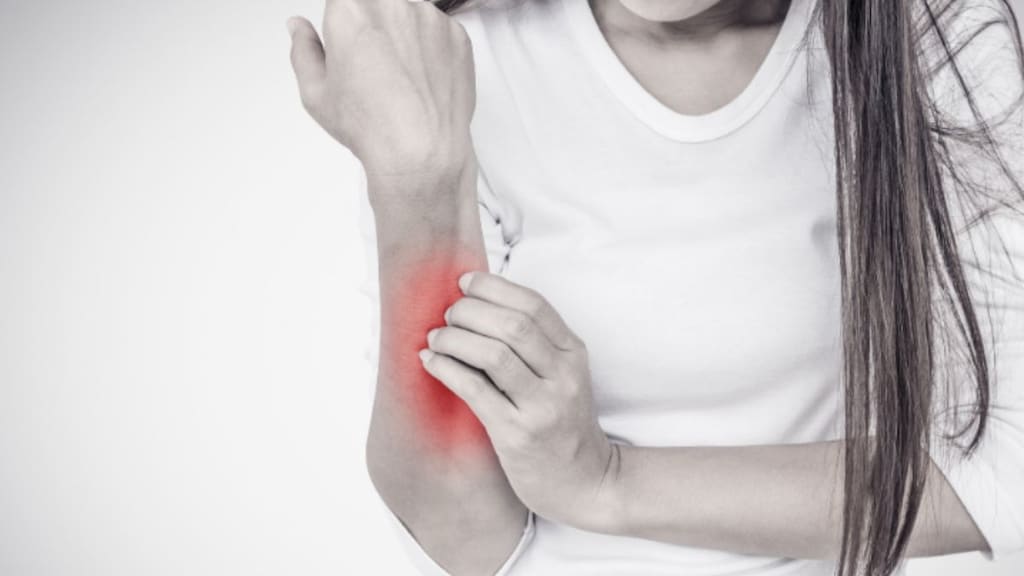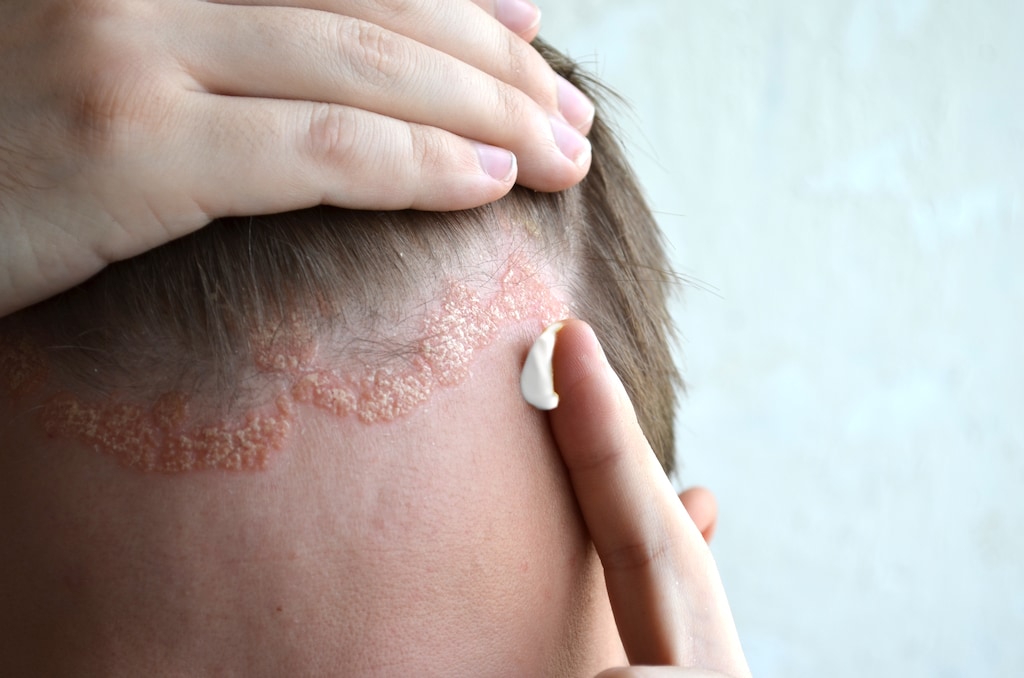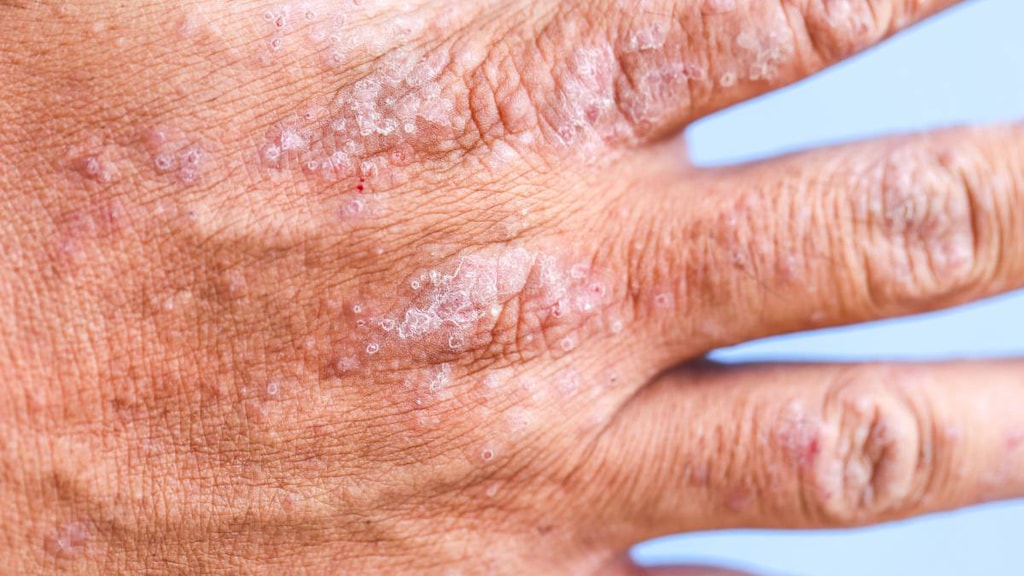Dosage Forms
Excipient information presented when available (limited, particularly for generics); consult specific product labeling. [DSC] = Discontinued product
Cream, External, as dipropionate:
Aclovate: 0.05% (15 g [DSC], 60 g [DSC]) [contains cetearyl alcohol, propylene glycol]
Generic: 0.05% (15 g, 45 g, 60 g)
Ointment, External, as dipropionate:
Generic: 0.05% (15 g, 45 g, 60 g)
Pharmacology
Mechanism of Action
Topical corticosteroids have anti-inflammatory, antipruritic, and vasoconstrictive properties. May depress the formation, release, and activity of endogenous chemical mediators of inflammation (kinins, histamine, liposomal enzymes, prostaglandins) through the induction of phospholipase A2 inhibitory proteins (lipocortins) and sequential inhibition of the release of arachidonic acid. Alclometasone has low range potency.
Pharmacokinetics/Pharmacodynamics
Absorption
Topical: ~3% absorbed systemically after 8 hours when applied to intact skin
Onset of Action
Initial response (Ruthven 1988): Eczema: 5.3 days; Psoriasis: 6.7 days
Time to Peak
Peak response (Ruthven 1988): Eczema: 13.9 days; Psoriasis: 14.8 days
Use: Labeled Indications
Steroid-responsive dermatosis: Treatment of inflammation and pruritic manifestations of corticosteroid-responsive dermatosis in adults and pediatric patients ≥1 year.
Contraindications
Hypersensitivity to alclometasone or any component of the formulation.
Documentation of allergenic cross-reactivity for corticosteroids is limited. However, because of similarities in chemical structure and/or pharmacologic actions, the possibility of cross-sensitivity cannot be ruled out with certainty.
Dosage and Administration
Dosing: Adult
Steroid-responsive dermatoses: Topical: Apply a thin film to the affected area(s) 2 to 3 times daily. Note: Therapy should be discontinued when control is achieved; if no improvement is seen within 2 weeks, reassessment of diagnosis may be necessary.
Dosing: Geriatric
Refer to adult dosing.
Dosing: Pediatric
Steroid-responsive dermatoses: Children and Adolescents: Topical: Apply thin film to affected area 2 to 3 times daily. Note: Therapy should be discontinued when control is achieved; if no improvement is seen within 2 weeks, reassessment of diagnosis may be necessary. Do not use for >3 weeks.
Administration
For external use only. Apply a thin film to clean, dry skin and rub in gently. Avoid contact with eyes; generally not for use on the face, underarms, or groin area (including diapered area). Use of occlusive dressings is not recommended. Wash hands thoroughly before and after use.
Storage
Store between 2°C and 30°C (36°F and 86°F).
Drug Interactions
Aldesleukin: Corticosteroids may diminish the antineoplastic effect of Aldesleukin. Avoid combination
Corticorelin: Corticosteroids may diminish the therapeutic effect of Corticorelin. Specifically, the plasma ACTH response to corticorelin may be blunted by recent or current corticosteroid therapy. Monitor therapy
Deferasirox: Corticosteroids may enhance the adverse/toxic effect of Deferasirox. Specifically, the risk for GI ulceration/irritation or GI bleeding may be increased. Monitor therapy
Hyaluronidase: Corticosteroids may diminish the therapeutic effect of Hyaluronidase. Management: Patients receiving corticosteroids (particularly at larger doses) may not experience the desired clinical response to standard doses of hyaluronidase. Larger doses of hyaluronidase may be required. Consider therapy modification
Ritodrine: Corticosteroids may enhance the adverse/toxic effect of Ritodrine. Monitor therapy
Adverse Reactions
Frequency not always defined.
Central nervous system: Localized burning (1% to 2%)
Dermatologic: Local dryness (2%), papular rash (2%), erythema (1% to 2%), pruritus (1% to 2%), acne vulgaris, allergic dermatitis, atrophic striae, folliculitis, hypopigmentation, miliaria, perioral dermatitis, skin atrophy
Endocrine & metabolic: Cushing's syndrome, growth suppression, HPA-axis suppression
Infection: Secondary infection
Local: Local irritation (2%)
Warnings/Precautions
Concerns related to adverse effects:
- Adrenal suppression: May cause hypercortisolism or suppression of hypothalamic-pituitary-adrenal (HPA) axis, particularly in younger children or in patients receiving high doses for prolonged periods. HPA axis suppression may lead to adrenal crisis.
- Contact dermatitis: Allergic contact dermatitis can occur, it is usually diagnosed by failure to heal rather than clinical exacerbation.
- Immunosuppression: Prolonged use may result in fungal or bacterial superinfection; discontinue if dermatological infection persists despite appropriate antimicrobial therapy.
- Kaposi sarcoma: Prolonged treatment with corticosteroids has been associated with the development of Kaposi sarcoma (case reports); if noted, discontinuation of therapy should be considered (Goedert 2002).
- Sensitization: Topical use has been associated with local sensitization (redness, irritation); discontinue if sensitization is noted.
- Systemic effects: Topical corticosteroids may be absorbed percutaneously. Absorption of topical corticosteroids may cause manifestations of Cushing syndrome, hyperglycemia, or glycosuria. Absorption is increased by the use of occlusive dressings, application to denuded skin, or application to large surface areas.
Special populations:
- Pediatric: Not for the treatment of diaper dermatitis. Safety and efficacy for use >3 weeks has not been established. Children may absorb proportionally larger amounts after topical application and may be more prone to systemic effects. HPA axis suppression, intracranial hypertension, and Cushing syndrome have been reported in children receiving topical corticosteroids. Prolonged use may affect growth velocity; growth should be routinely monitored in pediatric patients.
Other warnings/precautions:
- Appropriate use: Avoid use with occlusive dressings. Discontinue use if irritation occurs. If no improvement is seen within 2 weeks, reassessment of diagnosis may be necessary. Avoid contact with eyes. Generally not for routine use on the face, underarms, or groin area (including diapered area).
Monitoring Parameters
Growth in pediatric patients, signs/symptoms of HPA axis suppression/adrenal insufficiency; bacterial or fungal skin infection.
If HPA axis suppression is suspected, evaluate patient using the following tests: ACTH stimulation test, AM plasma cortisol test, and urinary free cortisol test
Pregnancy
Pregnancy Risk Factor
C
Pregnancy Considerations
Adverse events have been observed with corticosteroids following topical application in animal reproduction studies.
Systemic bioavailability of topical corticosteroids is variable (integrity of skin, use of occlusion, etc) and may be further influenced by trimester of pregnancy (Chi 2017). In general, the use of topical corticosteroids is not associated with a significant risk of adverse pregnancy outcomes. However, there may be an increased risk of low birth weight infants following maternal use of potent or very potent topical products, especially in high doses. Use of mild to moderate potency topical corticosteroids is preferred in pregnant women and the use of large amounts or use for prolonged periods of time should be avoided (Chi 2016; Chi 2017; Murase 2014). Also avoid areas of high percutaneous absorption (Chi 2017). The risk of stretch marks may be increased with use of topical corticosteroids (Murase 2014).
Patient Education
- Discuss specific use of drug and side effects with patient as it relates to treatment. (HCAHPS: During this hospital stay, were you given any medicine that you had not taken before? Before giving you any new medicine, how often did hospital staff tell you what the medicine was for? How often did hospital staff describe possible side effects in a way you could understand?)
- Have patient report immediately to prescriber signs of high blood sugar (confusion, fatigue, increased thirst, increased hunger, passing a lot of urine, flushing, fast breathing, or breath that smells like fruit), signs of adrenal gland problems (severe nausea, vomiting, severe dizziness, passing out, muscle weakness, severe fatigue, mood changes, lack of appetite, or weight loss), signs of Cushing's disease (weight gain in upper back or abdomen; moon face; severe headache; or slow healing), skin discoloration, signs of skin changes (pimples, stretch marks, slow healing, or hair growth), or skin irritation (HCAHPS).
- Educate patient about signs of a significant reaction (eg, wheezing; chest tightness; fever; itching; bad cough; blue skin color; seizures; or swelling of face, lips, tongue, or throat). Note: This is not a comprehensive list of all side effects. Patient should consult prescriber for additional questions.
Intended Use and Disclaimer: Should not be printed and given to patients. This information is intended to serve as a concise initial reference for health care professionals to use when discussing medications with a patient. You must ultimately rely on your own discretion, experience, and judgment in diagnosing, treating, and advising patients.



